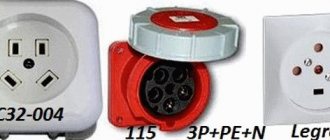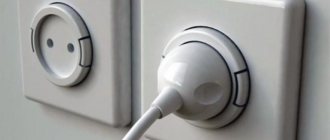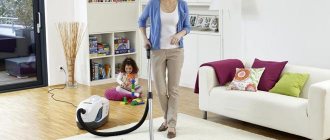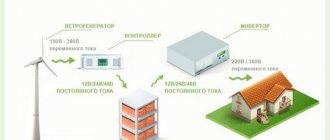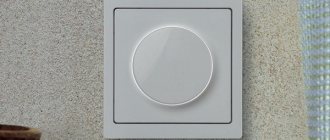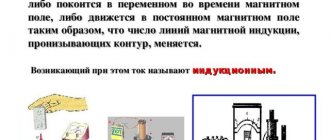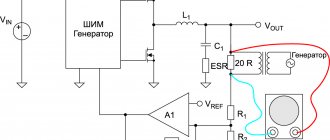Why save energy?
If saving money on electricity bills is not a strong incentive for you, then look at the problem differently. Electricity is produced by thermal power plants, which daily emit many harmful substances into the atmosphere by burning natural fuels: coal, oil and gas. Environmental pollution leads to global warming and, as a result, natural disasters. Efficient use of electricity will help preserve nature. If every person consciously addresses environmental issues, we can save the planet for our children. We bring to your attention the best ways to effectively save energy at home.
Application
The main manifestation of electricity is electric current. This phenomenon, which is the ordered movement of charged particles, is used:
- In everyday life - for lighting and heating homes, operating various equipment and tools;
- In industry - for lighting and heating of industrial and administrative buildings, operation of machines and various equipment;
- Transport – for powering power plants of railway transport, charging batteries of electric vehicles;
- In science - to conduct various experiments and experiments to study space and the secrets of nature.
Thus, electric current is the most important part of the modern world - without it the whole world will stop and very soon return to the stone age.
Lighting in the home - ways to save energy
Lighting costs when using incandescent lamps are approximately one third of all electricity costs.
How to reduce energy consumption by using natural lighting
Try to make the most of natural light during the day: open curtains, raise blinds. Light transparent curtains will make the house brighter and more comfortable. Natural light does not damage your eyesight and helps cope with bad moods, so let it into your home. Make the most of daylight hours. Move some tasks from late evening to morning to avoid artificial lighting.
Place the sofa and desk near the window. This way you can read without an additional light source. You can equip a relaxation area on the glassed-in balcony. Try to keep windows from being obscured by tall indoor plants. There should also be no tree branches outside the window.
If you are renovating or building a house, then plan in advance the location of large windows, light guides, and glass roofs. Choose the right doors for your premises. For example, glass inserts in doors can let light into a dark hallway.
How to effectively save energy by zoning rooms
Divide the space into zones with different brightness of lighting. Use various light sources in the apartment: chandeliers, table lamps, sconces, night lights. Arrange them depending on your light needs. For example, the hall can accommodate:
- a large chandelier with several bulbs, the light in which is regulated by a two-key switch;
- floor lamp near the reading chair;
- table lamp with a daylight source on the desktop.
It is more effective to add light in the desired area than to turn on bright general lighting. Just do not replace the main lighting with additional light sources, as this can damage your vision. There should be no darkness in the room; dim light can negatively affect your health: lead to migraines and depression. Let's look at how you can save electricity and keep your home bright by choosing the right light bulbs.
What light bulbs to use for lighting to reduce energy costs
If you use regular incandescent lamps, look where in the apartment you can replace them with less powerful ones. Better yet, replace this type of light bulb with a more modern one.
Energy-saving lamps consume several times less electricity than their predecessors. They are more expensive, but have a long service life. The investment will pay off within a year.
Types of energy-saving light bulbs:
- Mercury lamps. They consume 4 times less energy than incandescent light bulbs. The only downside is that used lamps must be disposed of properly.
- LED light bulbs. They have appeared on the market recently, but have already proven themselves to be reliable and economical. They last even longer than mercury ones and do not contain harmful substances. The disadvantages of these lamps include their high cost.
How to get rid of the bad habit of leaving the lights on
The easiest way to avoid wasting electricity is to not leave the lights on when leaving the room. The habit of not turning off the electricity often leads to the fact that the light bulb is on even when a person leaves for work. You can combat this with reminder notes stuck on the front doors. The inscription could be: “Before leaving, turn off the lights!”, “Check the lights, water, iron, gas!” It is very convenient if there is a switch near the door that can be used to turn off the power to all the light bulbs in the house.
How you can save on home lighting using new technologies
- Motion sensors that turn on lights when a person appears;
- Light sensors that do not allow artificial lighting to be turned on during the day;
- A switch with a timer that lights the light bulb for a certain time;
- Programs that turn on electricity in zones, depending on the level of illumination and time of day.
- Remote controls allow you to turn off the lights from anywhere in the room.
- Switches that can be turned to adjust the brightness of the lighting.
- Light bulbs that store electricity during the day.
Conclusion
The relatively short but rapid development of the practical application of electricity is undoubtedly the greatest achievement of mankind. But no matter what grandiose power plants operate in our country, they are all far away. For the consumer, the main and dearest thing is the ELECTRICAL of his apartment and house. How to make electrical wiring in an apartment and house, what electrical networks are used for domestic needs, how to carry out electrical installations, how to repair electrical equipment with your own hands.
©Elesant.ru
Other articles
- Choosing a lamp for the bedroom
- Group lighting lines: general norms and rules
- How and when to call an electrician?
- How to choose a cable in a 0.4 kV power network: cable cross-section and length
- How to hide electrical wiring in an apartment according to the rules
- Lighting networks of industrial enterprises
- The difference between group networks and power supply and distribution networks
- Obtaining permits for additional capacity
- Repair of old electrical wiring
- Lamps for the bedroom: what they are, what to look for when choosing
Electricity and heat in the house. How to reduce energy consumption?
With the onset of cold weather, people are increasingly turning on electric heaters. Insulating your home will help keep it at a comfortable temperature before turning on the central heating, without using electrical appliances.
Start insulating your rooms by replacing old windows with modern plastic structures with double-glazed windows. If this is not possible, then use mounting tape to insulate window and door openings. Covering windows for the winter will eliminate heat loss and drafts.
Owners of private houses should take care of good thermal insulation of external walls and roofs. If the house is well insulated, this will help keep the room warm during the cold season. In hot summer weather, such a house will be cool, so you won’t have to turn on the air conditioning. Thus, insulating the house helps to save energy both in winter and summer.
Maintain the optimal temperature in the room. It should not exceed 21 degrees. Do not turn on the heater unless the temperature drops below this mark. This way you will not dry out the air in the room and, as a result, you will suffer less from ARVI. It is better to dress a little warmer if you are not comfortable in the room at this temperature.
Atomic structure, positive and negative ions
So, any substance of any origin (water, wood, stone, glass) consists of smaller elements. They are called molecules. Take at least a drop of water. It consists of many individual molecules with the familiar chemical formula H2O. Further, the molecule of the substance can be divided into even smaller particles - atoms .
Structure of matter
Currently, only more than a hundred different atoms are known, but this is not the limit. Atoms can form millions of different molecules and, accordingly, as many different substances.
Water molecule
Planetary model of the atom
As everyone knows from school, at the center of the atom is its heaviest element - the nucleus. Electrons move around it at a certain distance in different orbits. The nucleus is not a solid element; it is made up of protons and neutrons.
Planetary model of the atom
Electrons have a negative charge, and protons have a positive charge. The neutron, as the name itself suggests, does not exhibit the properties of either charge. In other words, he is neutral.
To understand the essence of electricity, let's take a closer look at the structure of atoms. To simplify some processes, a planetary model of the atom is used. Just as in our solar system the planets move along their trajectory around the sun (nucleus), so in the atom electrons move around the nucleus. An electron is not a dense particle of matter. It is a clot of energy spread out in space, like flattened ball lightning.
What is a short circuit? What are the reasons for it and how to prevent it
The mass of a proton is approximately 2000 times the mass of an electron. But the total positive electric charge of all protons is equal to the total negative charge of all electrons. Therefore, under normal conditions, the atom is electrically neutral and no forces are felt outside of it. Positive and negative charges seem to neutralize each other.
Let's consider the periodic system of chemical elements, known to everyone as the periodic table. In these elements, all atoms are arranged in a strict sequence: from the lightest to the heaviest - according to the relative atomic mass, the main share of which is made up of protons. Neutrons also have mass, but since they do not have a pronounced electric charge, attention will not be focused on them.
Mendeleev's periodic table
How to save energy in your apartment by using electrical appliances
First, let's figure out which electrical appliances consume the most energy. These data are very approximate, but they allow you to find out which equipment has the greatest impact on the amount of electricity spent per month.
| Device | Operating time, hours/day | kW/h per day |
| TV | 3 | 0.5 |
| computer | 12 | 4 |
| iron | 2 | 1 |
| microwave | 1 | 1 |
| multicooker, steamer | 6 | 1 |
| hood | 8 | 1 |
| oil heater | 12 | 6 |
| fan heater | 2 | 5 |
| hair dryer | 1 | 0.5 |
| electric stove | 4 | 3 |
| water heater 60-70 liters | 1 | 1 |
| Dishwasher | 1 | 2 |
| washing machine | 2 | 2 |
| fridge | 24 | 1 |
| freezer | 24 | 1.2 |
| electric kettle | 1 | 1 |
| incandescent lamp, 100W | 8 | 0.8 |
Unplug equipment you don't use
Leaving appliance plugs plugged into sockets wastes electricity. Equipment in standby mode continues to use it. When leaving home, unplug:
- kettle;
- coffee maker;
- TV;
- computer;
- sound speakers;
- phone chargers;
- hair dryer;
- food processor and other appliances.
This way you will not only save energy, but also protect your equipment from power surges and short circuits, which can lead to a fire. Your efforts will pay off at the end of the month with significant savings.
Replace old equipment with new models with a high energy saving class
Previously, manufacturers did not set themselves the goal of producing household appliances that would save energy. Today the situation has changed dramatically; energy consumption by appliances continues to decline. Devices that consume minimal electricity are among the best in their class. They are also not cheap, but the money invested in them pays off in a couple of years. Therefore, it makes sense to replace large household appliances with new models. First of all, it is advisable to change the refrigerator and washing machine. For maximum energy savings, choose a Class A appliance whenever possible.
Use electrical appliances wisely
- Some simple rules will help reduce your electricity costs.
- Load the dishwasher full instead of washing dishes in small batches.
- Make sure that the refrigerator door closes tightly and do not leave it open for long periods of time.
- When cooking in an electric oven, do not open the oven door too often so as not to reduce the heat inside the oven. Additional electricity will be needed to restore the previous temperature.
- Set aside one day for laundry. This way you can fully load your washing machine and save money by not doing daily laundry.
- Don't heat a full electric kettle if you only need one cup of boiling water.
Do not use electrical appliances unless necessary
Nowadays advertising forces people to buy many household appliances. Some of them really make homework easier, while others we actually don't need at all. You can prepare dinner for two every day without the help of a food processor. But it will come in handy when you make preparations for the winter.
Instead of a yogurt maker, you can use a thermos. It also does a good job of keeping the milk at a constant temperature. Instead of an electric air freshener, it is useful to use aromatic oil or simply ventilate the room more often.
Instead of using an electric clothes dryer, you can hang your laundry on the balcony.
If the house has a gas stove, then it is better to replace the electric kettle with a regular one. If you are afraid that you will forget to turn it off, then buy a kettle with a whistle.
There are many such examples. After all, our parents used to do housework without the help of sophisticated technology. Think about what devices you can do without.
Electric current and its uses
Now we can say with confidence that the most important achievement of mankind is the discovery of electric current and its use.
Electrical energy is of great importance, both in the life of each individual person and in the development of modern society as a whole.
Today it is difficult to imagine our life without electricity. After all, it is what lights up our homes and streets, and sets trams, trolleybuses and trains in motion.
Yes, and all the household appliances we use at home operate using electrical energy.
The operation of modern means of communication, without which we cannot imagine our lives - telephone, radio, television, the Internet - is also based on the use of electrical energy.
Electricity has settled in all spheres of human activity. Neither industry, nor agriculture, nor even science can do without electricity.
Without it, the development of cybernetics, computer and space technology would have been impossible.
But it is important to understand that the electrical energy that we use does not exist in nature in a form ready for consumption. It cannot be extracted like a mineral - oil or coal.
So where does it come from?
In order for any energy to become useful to a person, he had to learn how to handle it, which means he had to learn to convert one type of energy into another.
Humanity has coped with this difficult task. People began to receive electrical energy, which is so necessary for industrial and domestic needs, from other types of energy: mechanical, thermal, light, chemical.
Conversions of various types of energy into electrical energy occur at power plants. A device that converts any energy into electrical energy is called a source
.
People obtain the bulk of electrical energy by converting mechanical energy using special electromechanical machines.
These machines are called electric generators
.
In an electric generator, the mechanical energy of the turbine is converted into electrical energy. A turbine
is a rotating wheel of a special design. For example, in hydroelectric power plants, the turbine rotates using the energy of falling water.
In thermal power plants, the turbine rotates using the energy of steam movement.
And at wind power plants - due to wind energy.
At space stations, the source of electrical energy is photocells. They are the ones who convert solar energy into electrical energy.
In addition to stationary sources, there are portable sources of electrical energy
. These are galvanic cells, various batteries, as well as batteries made from them.
In portable sources, electrical energy is obtained through the chemical process of interaction of dissimilar metals with a special substance - an electrolyte. There are also small-sized mechanical generators that operate using the muscular strength of a person’s arms or legs. An example of a small-sized mechanical generator is a bicycle headlight generator.
Let's try to figure out how the process of transferring electrical energy occurs.
In general, the first information about electricity appeared many centuries ago and then it related to electric charges that were obtained through friction. Even in Ancient Greece, it was established that if amber is rubbed with woolen cloth, it will acquire the ability to attract light objects.
By the way, in Greek the word “amber” sounds like “electron”. “electricity” comes from this word.
.
Then people found out that many other substances have exactly the same properties. Then such substances were called electrified
.
Now we say that bodies in this state have electric charges
, and we call the bodies themselves
charged
.
So, electrical energy is transmitted using a stream of tiny charged particles.
These charged particles always arise when different substances come into close contact. In some bodies, electrical charges can move freely between different parts, but in others this is impossible. In the first case, substances are called conductors
, in the second -
dielectrics
or
insulators
.
Conductors are all metals, solutions of salts, acids, including ordinary drinking water.
Examples of insulators include glass, rubber, and various plastics.
You should know that the division of substances into conductors and dielectrics is very arbitrary. Since all substances conduct electricity to a greater or lesser extent.
In nature, there are two types of electrical charges. Conventionally, they are called positive and negative.
Around each of these charges there is an electric field, due to which like charges repel each other, and unlike charges attract each other. In the case of interaction between different substances, unlike charges will tend to move from one substance to another. The movement of these charged particles will constitute an electric current.
In general, electric shock
called the ordered (directed) movement of charged particles under the influence of an electric field.
Historically, the direction of electric current was taken to be the movement of positive charges that move from the positive pole of the source to the negative along the conductor connected to the poles.
The number of charges passing per unit time through the cross section of a conductor is called current strength
.
This dependence is expressed by the following formula: , where is the current strength, is the number of charges, is time.
The unit of current is called the ampere.
, in honor of the French scientist Andre Ampère.
All electrical devices are supplied with constant
and
alternating current
.
Electric current, the direction and value of which does not change over time, is called constant
.
And an electric current, the direction and value of which can change periodically, is called variable
.
Most electrical devices are powered by alternating current.
Now let's look at the features of the flow of electric current in various environments and its application.
So, when considering the issue of the flow of electric current, it is necessary to take into account the presence of various current carriers - elementary charges - characteristic of a given physical state of a substance. The substance itself can be solid, liquid or gas.
In metal conductors, current is generated due to the movement of electrons having a negative charge. In general, all metals are current conductors. The application of current in metals is used to transmit electricity over a distance.
Among liquids, only electrolytes - solutions of salts, acids and alkalis - conduct electric current. The passage of direct electric current through liquid media is accompanied by chemical reactions. This property is widely used in batteries, in electrometallurgy for the production of aluminum and bauxite, as well as in the electrochemical processing of materials and the purification of metals from impurities.
An electric current in a gaseous medium causes the gas to glow. Fluorescent lamps, lasers, and spotlights operate on the basis of this phenomenon.
Devices that convert electrical energy into other types of energy - light, heat, mechanical and chemical energy - are called receivers
or
consumers of electrical energy
, and in electrical engineering -
load
.
In order for an electrical device (or load) to work, it must be connected to the poles of a current source. In practice, the source and load are often connected using additional conductors; in everyday life and electrical engineering they are called wires.
What we just talked about: the source of electrical energy, the load and the connecting wires - all together this is called an electrical circuit
.
Lesson summary
In this lesson we talked about electric current and its uses. We looked at various sources of electricity. We figured out how the process of transferring electrical energy occurs. We also looked at the features of the flow of electric current in various environments and its application.
How to save electricity when heating water
The boiler not only heats the water, but also maintains its temperature at the same level all day. If you do not control the consumption of hot water, then you will have to pay a significant amount to heat it at the end of the month.
How to save hot water:
- Do not set the temperature on the boiler too high, this way you can reduce the energy consumption for heating water during the day.
- Good thermal insulation of the boiler will help keep the water hot for a long time without additional heating.
- If you take a shower instead of a bath, you can reduce your water consumption by three times. This is provided that you spend no more than 20 minutes in the shower.
- It is more economical to wash dishes once a day. But if you don't like the mess, wash your plates with hot water in a bowl and then rinse them with cold running water.
Nikola Tesla
Nikola Tesla
Resonance in an electrical circuit
Nikola Tesla is an outstanding scientist who made a huge contribution to the study of this phenomenon. Tesla owns more than 1,000 different inventions, about 800 of which he patented.
The most significant and important inventions of the great scientist are:
- High frequency generator;
- Induction asynchronous electric motor;
- High frequency transformer;
- Mast antenna for transmitting and receiving radio signals.
Tesla was also the first to develop and actively practice safety rules when working with electric current of various frequencies and strengths.
Electricity in nature
For a long period of time, it was believed that electricity is exclusively artificially created energy, however, B. Franklin reliably established that lightning during a thunderstorm is a powerful electrical charge.
According to the existing theory, the appearance of life on Earth is due precisely to the lightning effect, which led to the formation of amino acid synthesis. In addition, the presence of electrical charges in the nervous system of living beings ensures the occurrence of processes such as movement, thinking and breathing.
Electricity plays a special role in the life of many marine inhabitants. The fact is that some species of fish use electrical energy as protection from various aggressive relatives. These include eels, lampreys, electric rays, as well as some types of sharks.
The presence in the body of these inhabitants of the sea element of a special electrical organ, operating on the principle of a capacitor, allows them to gradually accumulate electrical energy and, if necessary, discharge it by touching their victim or their offender.
The capabilities of this organ allow operation with a frequency equal to several hundred hertz, and the power of the released energy can reach several volts. The level of current discharge directly depends on the age of the fish; accordingly, in older fish it is greater than in young ones.
Also, the importance of electric current lies in its role in orientation at great depths. The essence of this function is that objects surrounding the fish affect the electric field, as a result of which it is distorted.
